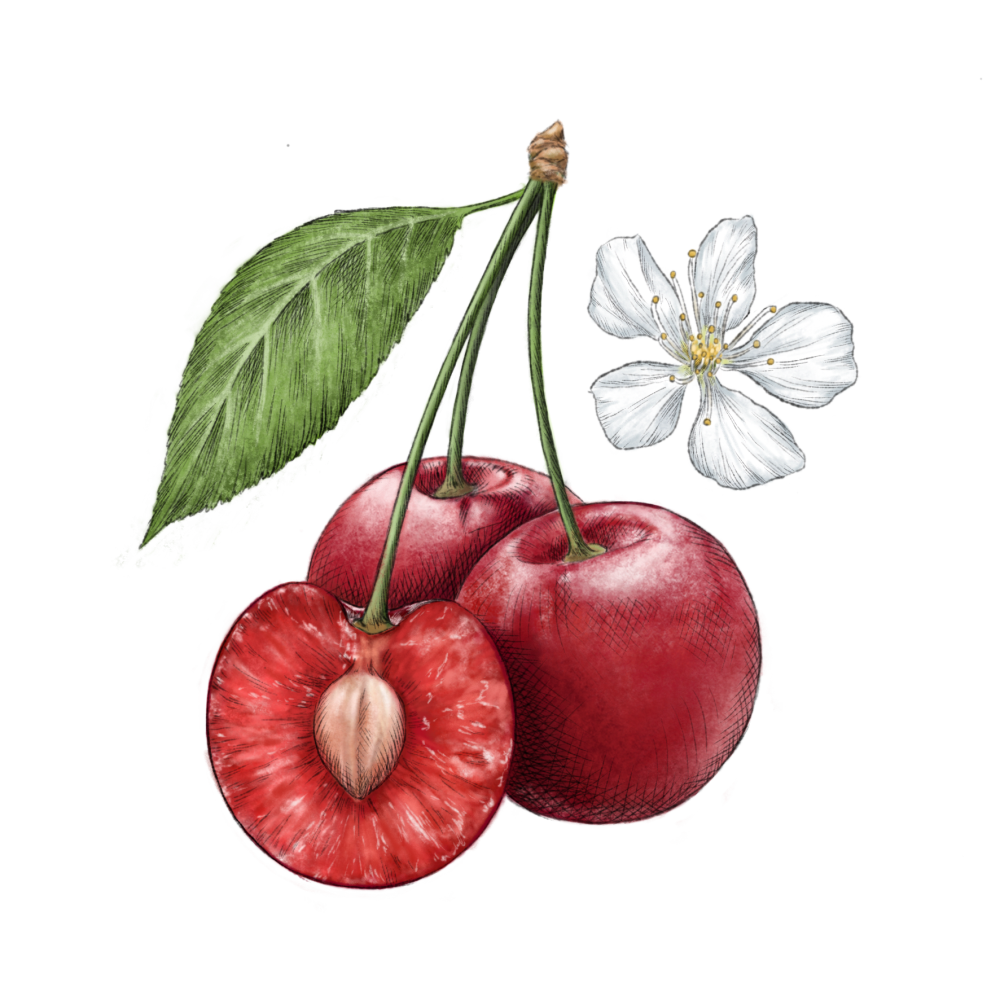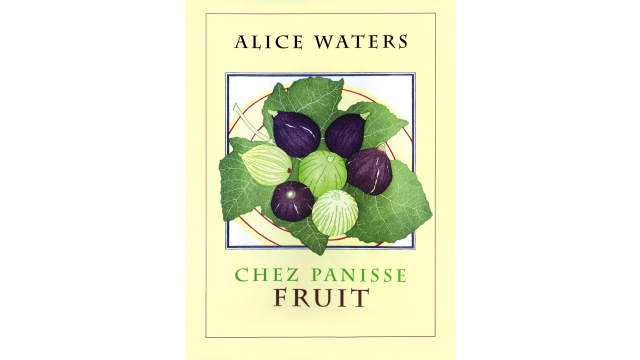Cherry

Latin name: Prunus avium (sweet cherry), P. cerasus (tart or sour cherry)
Uses: fruit, juice, preserves, confectionery, liqueurs and spirits
What are cherries?
Cherries are the fruit of trees in the rose family, meaning they’re related to apples, peaches, pears, and plums (among others). They have a short shelf life, best enjoyed while in season (early summer) and as locally as you can find. Cherries are divided into two large categories: sweet and tart.
Why are cherries healthy?
All cherries are great sources of fiber, vitamins (especially C), and minerals like potassium, copper, and manganese. They’re also full of antioxidants, polyphenols, and carotenoids with powerful anti-inflammatory properties. Tart cherries appear to have the edge when it comes to health benefits, though. Studies have shown they can boost athletic performance and improve the quantity and quality of sleep due to the melatonin they contain.
What do cherries taste like?
Fresh cherries are a marvel; sweet cherries are indeed sweet, with brightly acidic skin and a floral fragrance redolent of bitter almonds (benzaldehyde) and fruity/grassy top-notes (hexanal). Likewise, sour or tart cherries are indeed sour/tart. Akin to their green apple counterparts, their higher acidity makes them superior for pies.
How do I use cherries?
Honestly, all cherries need is a rinse. You can either remove the pits manually or spit them out. If you have a lot that need to be seeded (for pies, freezing, or canning), an old-fashioned cherry pitter makes quick work of it. Sweet cherries are typically best eaten out of hand, whereas sour cherries are better for baking and preserving.
What do cherries pair well with?
The complex flavor of cherries gives them a lot of range. You can bring out the fruitiness with the bitterness of black pepper, dry red wine, or dark chocolate (though plain old sugar, vanilla, cream, and eggs also do the trick); cherries and almonds are best mates. Dried cherries play beautifully with pistachios, carrots, and Ottoman spices like cinnamon, cumin, and blue fenugreek. Use sour cherries (and their syrup) with soft-rind cheeses and smoky flavors like lapsang souchoung tea.
Where do cherries grow?
Cherries are indigenous to temperate climates of western Asia, Europe, and northern Africa and have been used by humans since prehistoric times. Global cherry production is led by Turkey; in the United States, most sweet cherries are grown in Washington, California, and Oregon, and most tart (Montmorency) cherries are produced in Michigan.
How to buy cherries:
When buying fresh cherries, look for firm, fragrant fruit with stems still attached. Frozen or canned/jarred cherries are processed immediately after harvest and make a fine substitute the rest of the year.
Fun cherry fact:
During Prohibition in the United States, ice cream parlors exploded in popularity. This meant that the bright red cherry on top of every sundae, originally the marasca cherry from Dalmatia (in Croatia), would have to be made with something other than maraschino liqueur. An Oregon State University horticulturist got to work, eventually developing a nonalcoholic version using calcium salts, which are still used in the fruit preservation and ice cream industry today to keep fruits firm and plump.





